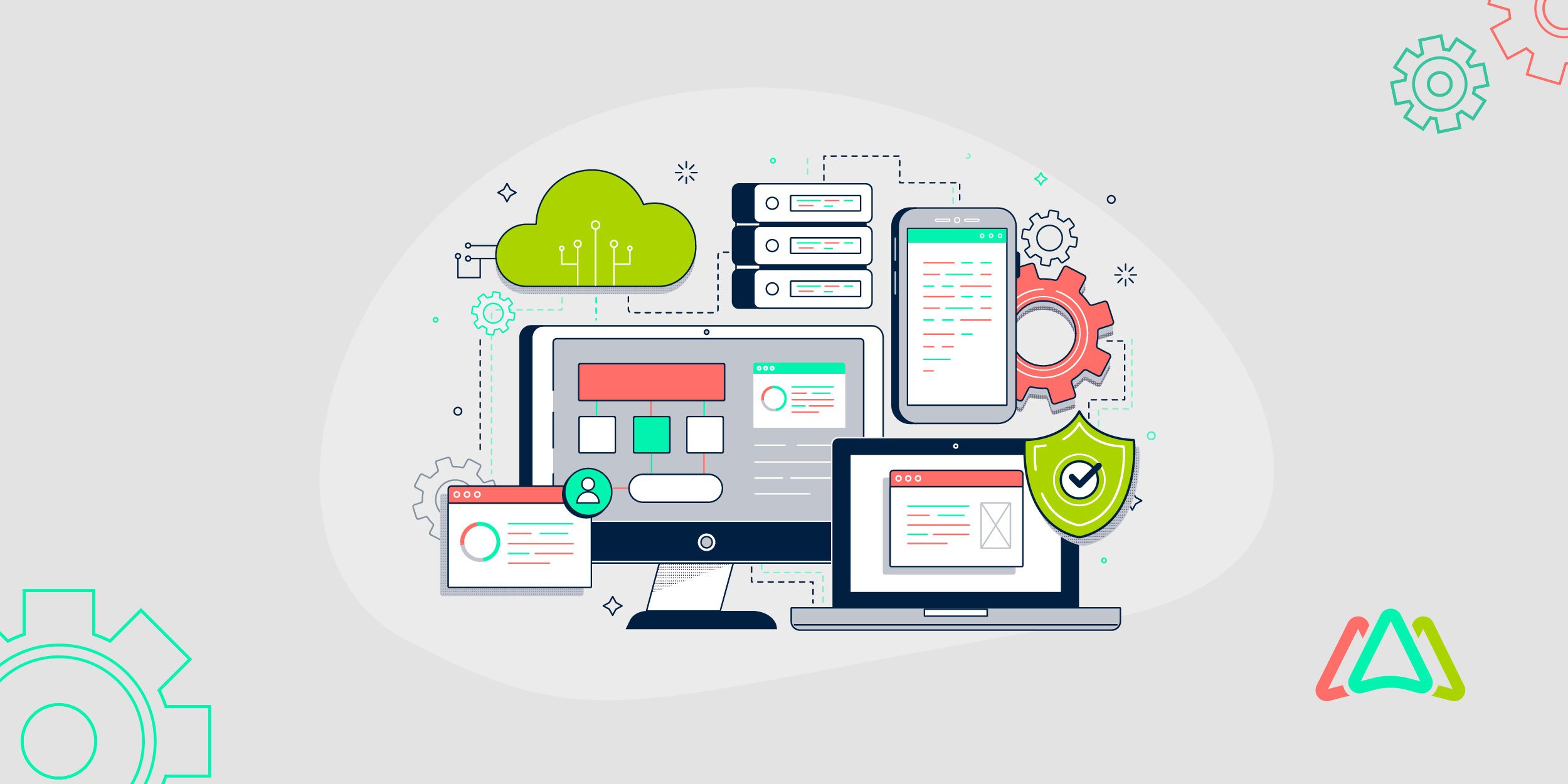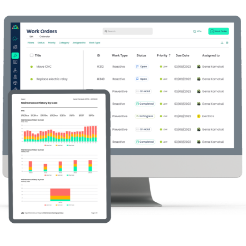
How IT Policies Impact CMMS Implementation and Adoption
Computerized Maintenance Management Systems (CMMS) have increasingly become the go-to tools for managing asset performance, preventive maintenance schedules, and work order workflows across industries. As organizations increasingly adopt digital solutions to enhance operational efficiency as they evolve in size and focus, CMMS platforms are keeping pace with their needs by offering mobile access, cloud-based deployment, and integration with enterprise systems. These capabilities enable maintenance teams to respond faster, track asset data in real time, and make data-driven decisions.
At the same time, it’s important to keep in mind that implementing a CMMS is not just a matter of choosing the best software. This is because other issues require consideration, such as the impact of policies. In this regard, internal IT policies can significantly influence—or even hinder—CMMS adoption and performance for many organizations. While IT departments are tasked with maintaining data security, regulatory compliance, and standardized infrastructure, their policies can inadvertently create roadblocks to modern CMMS functionality. Furthermore, strict rules around cloud usage, mobile access, or regulatory compliance (such as HIPAA or DFARS) often create tension between the needs for system functions and IT's policy-based restrictions.
This article explores how IT restrictions shape the CMMS journey—from implementation costs to user adoption. We’ll also examine strategies for navigating these challenges without sacrificing innovation or compliance.
The Tension Between Innovation and Restrictions
Modern CMMS platforms are designed with innovation in mind by offering mobile access, cloud-based scalability, real-time analytics, and seamless integration with IoT devices or enterprise systems. These features are sought after among asset-heavy industries where maintenance teams are dispersed and downtime is costly. Field technicians benefit from using their mobile devices to receive work orders, update asset conditions on the go, and access digital manuals instantly. Operations leaders rely on cloud-based dashboards to monitor KPIs and make quick decisions. However, these advancements often conflict with IT departments' policies that prioritize cybersecurity, data ownership, and regulatory compliance.

By their nature, IT teams are understandably cautious. Their role is to protect the organization’s digital infrastructure, ensure compliance with standards like HIPAA or DFARS, and prevent unauthorized access to sensitive data. When these policies are rigid, they often result in banning personal mobile phone use, prohibiting cloud storage, or requiring all applications to reside behind corporate firewalls. These restrictions can act as a hindrance to CMMS success. These security-based restrictions can delay implementation, reduce user engagement, and limit the very features that make CMMS effective. Given what’s at stake, the challenge lies in finding a middle ground that supports innovation without compromising security or compliance.
Common IT Policy Restrictions that Affect CMMS
As suggested, IT policy restrictions can significantly impact how maintenance teams deploy, access, and use a CMMS. One common restriction is the prohibition of personal mobile devices for work-related activities. While these curtailments are intended to minimize security risks and ensure compliance with data protection policies, they can limit access to mobile CMMS features. Without mobile access, field technicians must return to a desktop terminal to log data, update work orders, or retrieve asset history, which reduces productivity and introduces delays. Organizations that do allow mobile access may require the use of company-issued devices, which adds hardware costs and administrative overhead.
Another frequent policy hurdle is a ban on cloud-based software. Many modern CMMS platforms are cloud-native or cloud-first systems, offering benefits like remote access, automatic updates, off-site data backup, and flexible scalability. However, IT departments that mandate on-premise hosting due to perceived control or security concerns often eliminate these advantages. Cloud bans can also make it more challenging to integrate with other cloud-based systems, such as ERP, procurement, or remote monitoring platforms. This limitation can curb the connectivity and agility that CMMS platforms are designed to deliver.
Beyond infrastructure decisions, regulatory compliance requirements add another layer of complexity. In healthcare settings, for example, CMMS platforms must be HIPAA-compliant to ensure the protection of patient-related asset data. For government contractors, DFARS compliance requires specific cybersecurity standards, such as those outlined in NIST 800-171. These requirements limit the number of eligible CMMS vendors and may require custom configurations, stricter access controls, or third-party audits. All of these restrictions add additional cost and implementation time. While these policies serve important protective purposes, they can pose significant barriers to selecting and fully leveraging the best-fit CMMS solution.
The Cost Implications of IT Restrictions
When IT policies enforce strict requirements such as those previously noted, the cost of implementing a CMMS can rise significantly. On-premise deployments, for example, require upfront investment in servers, network infrastructure, cybersecurity measures, and ongoing maintenance by internal IT staff. These costs can be particularly weighty for small to mid-sized organizations that lack the capital or in-house expertise. Similarly, compliance-driven demands, such as data encryption, access audits, or secure third-party integrations, often require specialized software configurations and legal oversight. These requirements can increase vendor costs and extend deployment timelines.
Overly restrictive policies can also introduce hidden or long-term costs that can impede the CMMS’s return on investment. Without mobile access, for instance, technicians may spend more time walking to terminals than working on equipment, leading to lost productivity. Banning cloud services may also prevent access to vendor-provided updates, patches, or support, resulting in increased downtime or system vulnerabilities. Ultimately, while IT restrictions may reduce certain risks, they can also limit the efficiency gains and cost savings a CMMS is designed to provide. The bottom line is that for some organizations, it becomes difficult to justify or sustain the investment over time.
Impact on User Adoption and Efficiency
Strict IT policies can directly influence how willingly and effectively users adopt a CMMS. When access is limited by requiring actions such as logins only from specific terminals or blocking mobile device usage, technicians may see the system as requiring more effort than is needed. This often leads to incomplete or delayed data entry, skipped updates, or resistance to using the CMMS altogether. Maintenance staff, especially those in the field or on the shop floor, look for tools that are intuitive and accessible. When rigid IT rules restrict those tools, users may fall back on manual processes, paper logs, or informal communication, which, of course, undermine the purpose of the system and stand in the way of long-term success.
Furthermore, IT restrictions can interfere with the natural workflow of maintenance teams, reducing operational efficiency. For example, if technicians can’t access asset information or close out work orders from the field, it adds unnecessary back-and-forth and delays. Similarly, if supervisors or planners are denied remote access to dashboards or reporting tools due to off-site data access rules, decision-making slows down. Over time, these constraints lessen the system’s perceived value and reduce overall use. In environments where digital adoption is already a cultural challenge, overly strict IT controls can further reinforce skepticism and impede momentum before the CMMS ever reaches its potential.
Finding a Balance: Security Without Sacrificing Usability
Striking a balance between IT security and operational usability is necessary for successful CMMS implementation. Rather than viewing IT policies and operational needs as inherently onerous, organizations should foster collaboration between IT, maintenance, and compliance teams early in the CMMS selection and planning process. By involving IT from the start, maintenance leaders can better understand the security and compliance requirements that must be met. At the same time, IT professionals can gain insight into the practical demands of field technicians and facility managers. Developing a mutual understanding of circumstances and challenges opens the door to identifying workable solutions. Issues such as secure mobile device management (MDM) tools, role-based permissions, and private cloud hosting may be resolved in a way that protects organizational assets without creating unnecessary roadblocks.

Modern CMMS vendors increasingly support configurations that accommodate both sides of this equation. Features like encrypted mobile apps, IP-restricted access, two-factor authentication, and detailed audit trails enable compliance with regulations like HIPAA or DFARS while still offering the mobility and accessibility users need. In these ways, IT departments can enforce necessary safeguards without shutting down productivity-enhancing features. The result is that organizations don’t have to choose between security and efficiency. Instead, they can have both, provided that departments work together to align their goals and choose a CMMS platform that supports flexible, secure deployment options.
Suggested Solutions and Vendors for Restricted Environments
When cloud software is off-limits, either due to internal policy or regulatory pressure, organizations may need to seek out CMMS platforms that support on-premise or hybrid deployments. Solutions like IBM Maximo and Maintenance Connection (by Accruent) offer both on-prem and private cloud options. Having these options allows IT departments to retain control over data hosting, backups, and security settings. These platforms also support more complex compliance needs, such as HIPAA or DFARS, by offering customizable access controls, audit logs, and secure integration with enterprise authentication tools. For federal contractors and defense suppliers, CMMS vendors with FedRAMP authorization or alignment with NIST SP 800-171 guidelines are particularly important.
For healthcare providers and other organizations governed by HIPAA, vendors like Limble CMMS and eMaint provide specific configurations and policies to support required compliance. This includes data encryption, access control, and documentation required for audits. Similarly, organizations subject to DFARS requirements must ensure their CMMS vendor can demonstrate adherence to cybersecurity standards by offering features like multi-factor authentication, role-based access, and secure data storage. Ultimately, choosing the right vendor comes down to matching the platform’s capabilities with the organization's specific security and policy constraints. Equally important, the CMMS solution still must empower users with the tools they need to be effective, efficient, and successful.
Conclusion
IT policies play a crucial role in protecting an organization’s data and ensuring compliance with regulatory standards. The challenge is that IT tasks should not become insurmountable barriers to adopting modern CMMS solutions and realizing their potential benefits. When IT departments and maintenance teams collaborate early and often, they can find balanced approaches that uphold security without compromising usability or innovation. By selecting flexible CMMS platforms that accommodate mobile device management, support both cloud and on-premise deployments, and meet industry-specific compliance requirements like HIPAA and DFARS, organizations can achieve a successful implementation that benefits all stakeholders.
IT policies should serve as a framework that guides secure and efficient CMMS adoption. They need not be roadblocks that delay or diminish their value. When organizations prioritize communication, invest in compatible technology, and carefully evaluate vendors based on both security and operational needs, they will find themselves in the best position to experience the full potential of a CMMS. Employing a balanced approach can lead to higher user adoption, better maintenance outcomes, and more substantial alignment between IT and operations. When these goals are achieved, organizations can realize the gains they were seeking.
TABLE OF CONTENTS
Keep Reading
Tax season is the time of year that often sends a ripple of anxiety through many of us. The ...
11 Nov 2025
Selecting a Computerized Maintenance Management System (CMMS) can, at first glance, be an ...
4 Nov 2025
In healthcare facilities, equipment uptime involves more than achieving operational ...
31 Oct 2025
Companies are subject to economic ups and downs, also known as economic volatility. Today, ...
30 Oct 2025
Maintenance challenges are a constant struggle, with unplanned downtime costing manufacturers ...
27 Oct 2025
Last winter, a maintenance technician at a U.S. paper mill ignored a predictive alert that ...
10 Oct 2025
Many organizations proudly say they “have a CMMS,” but ownership alone doesn’t equal ...
9 Oct 2025
Every maintenance team is under pressure to do more with less. Unplanned downtime is often ...
7 Oct 2025
The implementation of simple, yet powerfully effective, checklists has repeatedly ...
3 Oct 2025
In manufacturing, every second counts. When production stops, whether due to scheduled ...
2 Oct 2025
The increasing cost of maintenance, lack of accountability, and siloed systems leave many ...
30 Sep 2025
Preventive maintenance is one of those things maintenance teams know they need to do, but it ...
26 Sep 2025
Public services are essential to daily life. The provision of safe roads, functional transit, ...
25 Sep 2025
For most manufacturing facilities, a major focus of their maintenance teams revolves around ...
24 Sep 2025
Have you ever tried explaining to the CEO why the production line has been down for hours ...
18 Sep 2025
Over the past few decades, the hotel industry has undergone a dramatic transformation. ...
16 Sep 2025
Profitability is at the top of the list for manufacturing organizations when conversations ...
12 Sep 2025
Lean manufacturing is a goal that organizations strive for in their quest for operational ...
11 Sep 2025
In many organizations, the primary focus of maintenance work is on completing work orders, ...
9 Sep 2025
Word order backlogs are a reality that all maintenance and facilities management teams face. ...
5 Sep 2025





